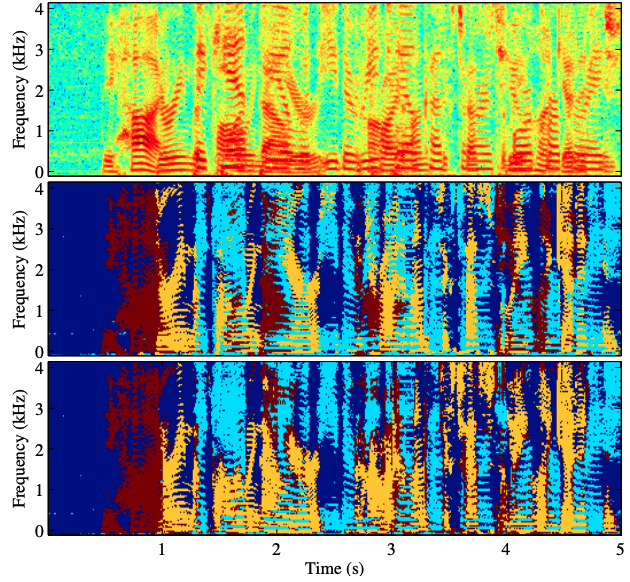SpEx: Multi-Scale Time Domain Speaker Extraction Network
Speaker extraction aims to mimic humans' selective auditory attention by extracting a target speaker's voice from a multi-talker environment. It is common to perform the extraction in frequency-domain, and reconstruct the time-domain signal from the extracted magnitude and estimated phase spectra. However, such an approach is adversely affected by the inherent difficulty of phase estimation. Inspired by Conv-TasNet, we propose a time-domain speaker extraction network (SpEx) that converts the mixture speech into multi-scale embedding coefficients instead of decomposing the speech signal into magnitude and phase spectra. In this way, we avoid phase estimation. The SpEx network consists of four network components, namely speaker encoder, speech encoder, speaker extractor, and speech decoder. Specifically, the speech encoder converts the mixture speech into multi-scale embedding coefficients, the speaker encoder learns to represent the target speaker with a speaker embedding. The speaker extractor takes the multi-scale embedding coefficients and target speaker embedding as input and estimates a receptive mask. Finally, the speech decoder reconstructs the target speaker's speech from the masked embedding coefficients. We also propose a multi-task learning framework and a multi-scale embedding implementation. Experimental results show that the proposed SpEx achieves 37.3%, 37.7% and 15.0% relative improvements over the best baseline in terms of signal-to-distortion ratio (SDR), scale-invariant SDR (SI-SDR), and perceptual evaluation of speech quality (PESQ) under an open evaluation condition.
PDF Abstract

 WSJ0-2mix
WSJ0-2mix